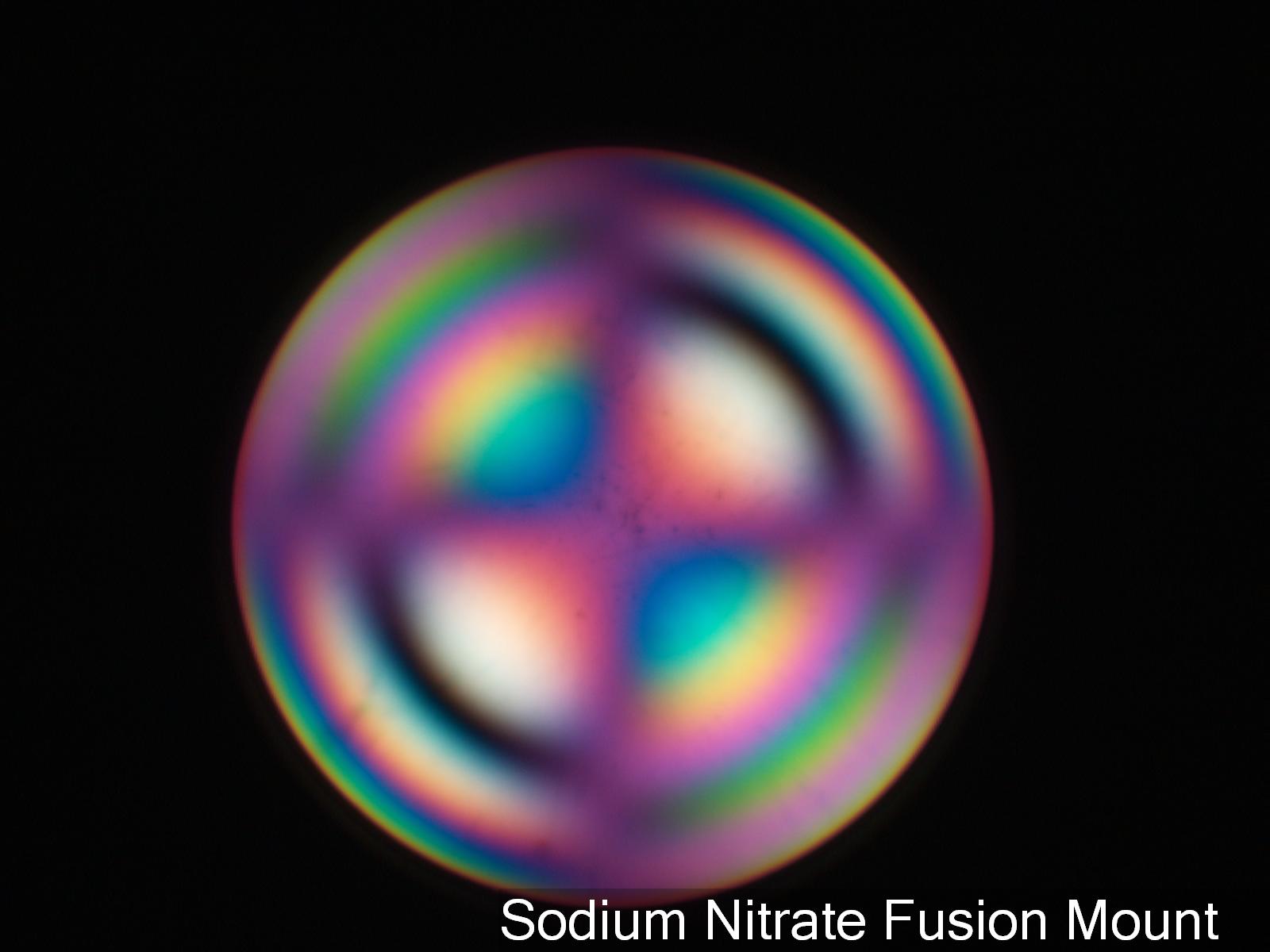Uniaxial Interference Figure With Red Plate, Sodium Nitrate
Fusion Sample
This is a conoscopic view of a crystal of sodium nitrate
from a fusion mount. It shows a centered view down the
optic axis with the red plate compensator inserted in the light path. The melatope
at the center and the isogyres (Maltese cross) have turned
red. The part of the isochromes closest to the melatope in the second and fourth
quadrants have turned blue and the isochromes that were the
first red and blue in the first and third quadrant have turned black. That indicates
the sodium nitrate is optically negative.
Transmitted Cross Polarized Light, Conoscopic View
Definition/Function:
Sodium nitrate freezes in large crystals with a variety of orientations when cooled
under a coverslip.
The crystal that shows the least change when rotated between crossed polarizing Filters
is the closest to
an optical axis normal position. When viewed conoscopically by using the Bertrand lens,
phase telescope,
pin hole eyepiece, or just viewing down the optical tube with the eyepiece removed shows
a Maltese Cross.
The black area at the center of the cross is the projection of the optic axis at the
center of the isochromes.
The arms of the cross are the locations where the omega and epsilon prime orientations
align with the two
polarizing filters.
Significance in the Environment:
The uniaxial interference figure identifies the particle as belonging to the uniaxial
group of crystals, tetragonal or hexagonal. By using a
compensator plate the optical sign of the crystal can be determined. Seeing any part of
the uniaxial interference figure identifies the
orientation of the omega refractive index. The omega refractive index is always normal
to the isogyres and tangential to the isochromes at the
center of the field of view. If the uniaxial interference figure is centered in the
field of view then only the omega refractive index can be
measured in that orientation. If uniaxial interference figure is not centered then the
omega and some epsilon prime refractive indices can be
measured. If only a "flash figure" is seen then both the omega and the true epsilon
refractive indices can be measured.
Characteristic Features:
The uniaxial interference figure contains the melatope (projection of the optical axis),
the isogyres (dark bands), and the isochromes. The
isochromes are always circles of colored bands centered on the melatope. With circular
polarized light the isogyres disappear. The isogyres
always travel up and down and from right to left or
left to right across the field of view except for the "flash figure". The flash figure
occures when the epsilon refractive index is in the
plane of the stage. The flash figure disappears typically within a rotation of five
degrees or so.
References:


